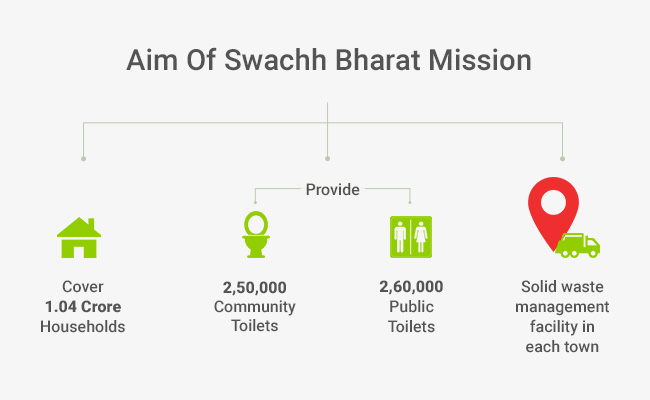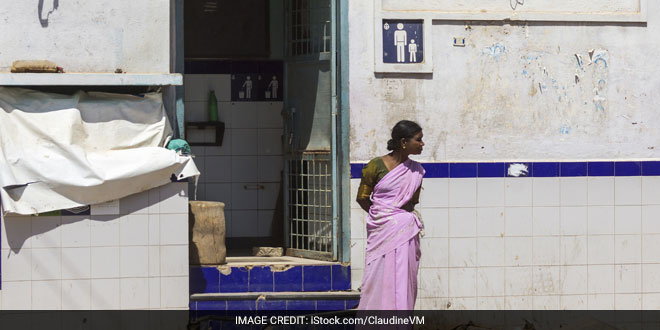New Delhi: Finance Minister Arun Jaitley unveiled his fourth budget on Wednesday and defined Clean India as one of the focus areas of this Budget. Mr Jaitley made some key announcements to further boost the Swachh Bharat Abhiyan. While many economists and strategists welcomed the Budget 2017, we spoke to few experts for their views on the Clean India announcements made by the Finance Minister. The reactions were mixed and ranged from applauding the government for continuing to back the Clean India movement to being cautious on the implementation of some of the initiatives announced.
Also Read: Budget 2017: Open Defecation Free Villages To Get Piped Water Supply
Expert Talks – ‘Swachh Bharat Mission lags far behind its stated aim of making India open defecation-free by end of 2019’
Swachh Bharat Mission has gained quite a momentum in the past two years and while presenting the Budget 2017 the Finance Minister said that the programme has made tremendous progress and sanitation coverage has been scaled up to 60 per cent from 42 per cent in October 2014. Talking on the sanitation coverage front, Swati Singh Sambyal, Programme Manager, Environmental Governance (Municipal Solid Waste) from Centre for Science and Environment says,
Our data shows that so far, just 141 of the total 4,041 cities and less than one-sixth of the total 608,000 villages have been declared as Open Defecation Free. Under the urban component, just 22,000 public toilets have been built till July 2016 and about 9 per cent of the target of 255,000 public toilets for the five-year mission period have been constructed. As for community toilets, 76,744 seats have been constructed, or 30 per cent of the target.
Focus Of Swachh Bharat Mission
The aim of Swachh Bharat Abhiyan Mission is to cover 1.04 crore households, build roughly 11.1 crore toilets by 2019, provide 250,000 community toilets, 260,000 public toilets, and a solid waste management facility in each town. Covering 4,401 towns over a period of five years, the mission’s main objectives have been the elimination of open defecation, conversion of unsanitary toilets to pour flush toilets, eradication of manual scavenging, municipal solid waste management and bringing about a behavioural change in people regarding healthy sanitation practices.
So how far are we from the target? As of December 2016, the government has been able to construct a meagre 3 crore individual household latrines (IHHL) in India, so that means about 27% of the target has been achieved. The country still has a long way to go to become open defecation free.
Also Read: Government Launches Scheme To Improve Health Through Sanitation
Open Defecation Villages To Get Water Supply: Arun Jaitley
Talking about a key announcement made by Arun Jaitley during budget 2017 – Open Defecation villages will be given priority for piped water supply facility, Avinash Kumar, Director, Program and Policy, WaterAid said,
It is a good change but the target to achieve 70-80 per cent within 2-3 years is little too ambitious. This will lead to more slippages; our past surveys show that if piped water supply system lacks good infrastructure and construction then it becomes defunct. My only concern is on how the government plans to roll this plan out.
Also Read: Aiming For 200 Open Defecation Free Districts By November 2017: Government
While some experts wanted more to be done under Swachh Bharat Mission, there were some experts who backed Arun Jaitley’s Budget 2017 announcements on Clean India.
Some major announcements have been made during Budget 2017 under Swachh Bharat Abhiyan mission, which is a good thing. The earlier government used to just talk about things like sanitation, toilets, hygiene but today all these things have become a national priority, it is good to see there is more focus on Clean India efforts now,” said Bindeshwar Pathak, Founder of Sulabh International.
The total allocation for Swachh Bharat Abhiyan in Budget 2017-18 is 16,248 crores. Supporting the funding for the Swachh Mission in this budget, Naina Lal Kidwai, Founder of India Sanitation Coalition and Chairperson and Chairperson, Max Financial Services, said,
The fact that the mission gets mentioned in the Budget shows a positive aspect. It reflects that the government doesn’t forget big missions like this one which they have embarked on.
However, some experts feel that priority of the government needs to move beyond just focussing on sanitation coverage. Mr Kumar, of WaterAid says,
Even if the sanitation level has shown an increase, our surveys done in different villages of India highlights two critical points which government is not paying attention to at all – first is the quality of construction done by them and secondly the behavioural change among people. Currently what is being highlighted more by the government is the construction of toilets, in reality, the usages of those toilets are far less. In order to sustain the mission for long in my view, the government should definitely pay more attention to increasing the budget for Information, Education, and Communication under Swachh Bharat Mission.
Mr Kumar also said that in order to fulfill the dream of making India Open Defecation Free by 2019, it is important for the Government to allocate budget for local schools, Anganwadi centers to name a few, “Just constructing toilets will not solve anything, the government should allocate a separate budget for maintenance of the toilets and should also identify people who can be held accountable for any lags. We have gone to few villages and have seen that even if there are toilets, they are locked as villagers living there don’t want to spend money on its maintenance.”
Expert Speak: Budget On Solid Waste Management
Reacting to the other Clean India initiative in the Budget of setting up more solid waste management plants in order to reduce the load of garbage on the landfills, Ms Sambyal added,
Another stated objective (of Swachh Bharat Abhiyan) was to achieve 100 per cent waste management in 4,041 urban areas. On this front, only a handful of cities and towns have achieved 100 per cent door-to-door collection and transportation, while not a single town has managed 100 per cent disposal and processing of waste. We need to shift our focus over decentralised processing of waste – we should segregate and treat at source, but as of now this is nowhere in the agenda for the government. There is a push of centralised plants, which means time again we spend millions on transportation, why not look at reducing that cost. Where decentralised is working, it is working well. Waste to Energy plants are being suggested for towns that not even need them so far. The focus has to be on segregation, all these plants are taking mixed waste as of now. We need segregation, then processing. For India currently, it is working the other way round.
Also Read: NGT’s Order On Segregation Of Waste Will Help Reduce 50% Load On Landfills: Delhi Civic Body
Conclusion:
The focus on Clean India is important because poor sanitation costs India 5.2 per cent of its GDP and the human cost includes debilitating and deadly diseases through the contamination of drinking water sources. Through this Budget, the government seems to be rewarding those who have actively worked towards going open defecation free and by providing them with piped drinking water. In addition, the government aims to provide safe drinking water to over 28,000 arsenic and fluoride affected habitations.































Jasmine
February 6, 2017 at 8:16 pm
I hope this goal will be achived in near future, India needs clean water in the first place. fulfillment services